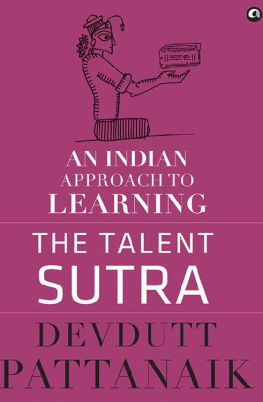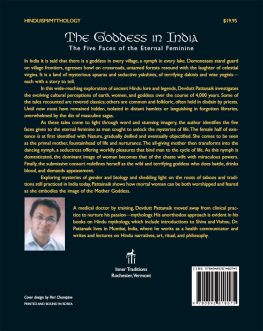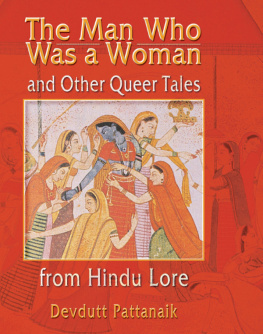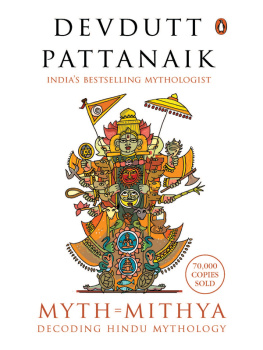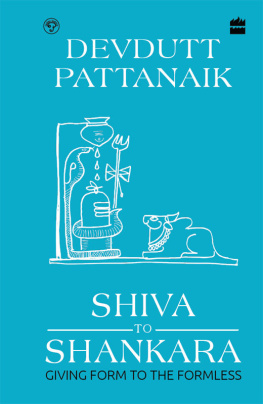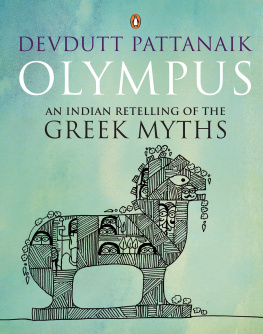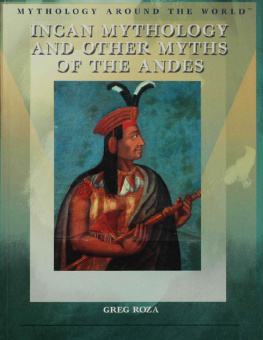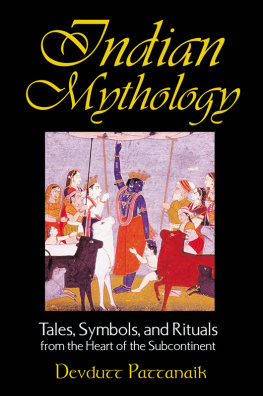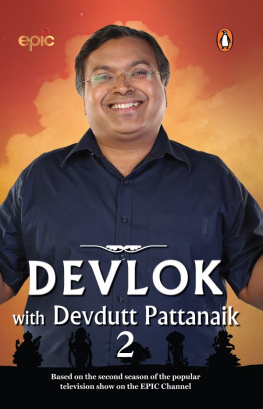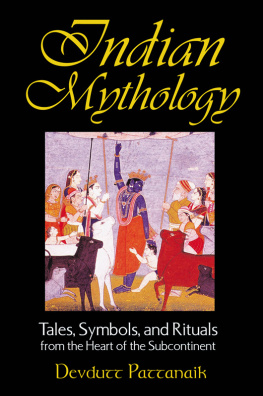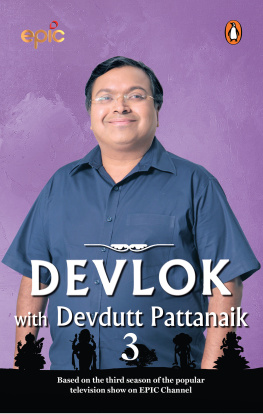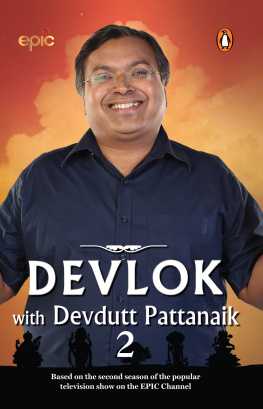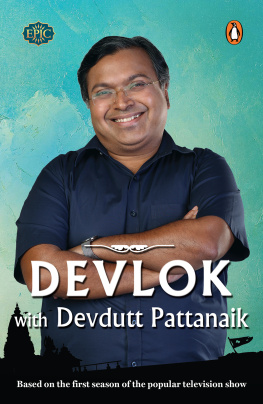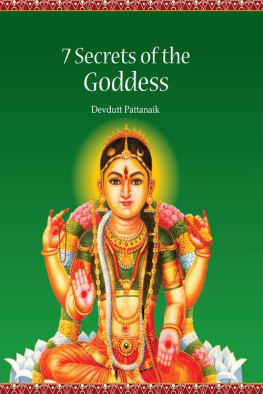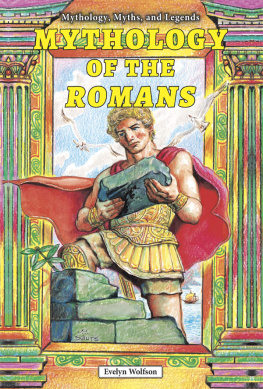Table of Contents
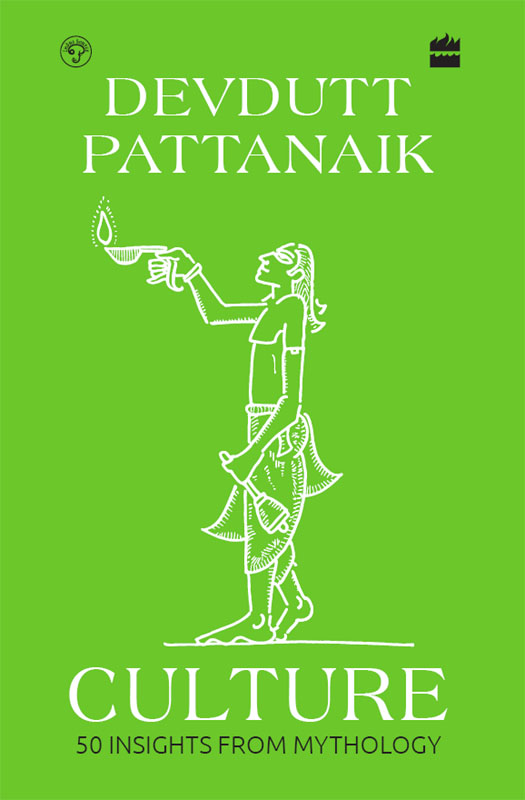
CULTURE
50 INSIGHTS FROM MYTHOLOGY
Devdutt Pattanaik
Illustrations by the author

Within infinite myths lies an eternal truth
But who sees it all?
Varuna has but a thousand eyes
Indra has a hundred
You and I, only two
Contents
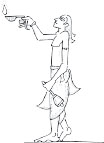
S torytelling is something that is very natural to human beings; we are constantly telling stories. Imagine a child coming home from school and telling his mother what happened there. What is he actually doing? He is telling a story of what happened in school, of how the teacher behaved, of how the students behaved, and as he narrates the story, villains appear, heroes appear, there is a plot and sometimes even a grand finale, where the good win and the bad are punished. The same happens when we pick up the phone for a chat. We want to tell a story or hear a story. We are all storytellers. We just dont realize it.
What is gossip if not storytelling? Some fact, some fiction, a lot of imagination. Newspapers are full of storiesevents as seen by the reporter. Books are full of stories of plants and animals and planets. Shops are full of stories of products and brands and customers and advertising.
Usually, the word story is used for fiction. We assume that when we narrate events from our life it is fact, not fiction. When we read about events in newspapers we assume they are fact, and hence not stories. Story in common parlance then is the opposite of reality.
At a philosophical level, however, all that is narrated is story. What we call reality is actually the memory of an event seen filtered through our senses and our biases. At best, it is just a perception of what happened, one version of the truth; at worst, it is entirely the product of imagination. Once we understand this and accept this, we realize the power of storytelling. We realize that everything around us is a storyeverything that we hear, see or remember stems from either perception or imagination.
Those who actually write a story are perhaps better storytellers than the rest of us because their stories appeal to a larger number of people, not to one or two as in a private conversation. They can enchant an audience, maybe an entire society, or a culture, or an entire generation, or maybe even several cultures over several generations.
It is very difficult to understand what makes any story special. Stories are like sweets that have an outer layer of toffee and a soft inner core of chocolate. As we eat this sweet, we first encounter the outer toffee. We chew on it, impatient to get to the chocolate within. The outer chewy part is the form of the narrative and the inner chocolate core is the idea of the narrative; the outer visible part is the flesh of the story (the plot, the characters, the tone, the pace) while the inner hidden part is the soul (the meaning).
The soul of a story is the reason why the story is being told. The soul can be just entertainment. All the storyteller wants to do is cause an adrenaline rush within you. In Sanskrit, adrenaline is known as rasa or mood juice. The storyteller is actually evoking the release of various kind of juices in his audiencethere is shringar-rasa, to elicit the flow of romantic juices in the audience; and there is veer-rasa, where again through a series of stories, an event or actors, the storyteller is able to construct a heroic flavour in the mind of the audience. This is pure entertainment and there is no deeper level beyond that.
Sometimes, a story is just a report, with no desire to entertain. The storyteller here tries to be very dispassionate so as not to influence the judgement of the audience. Reportage is not easy because as humans we are quick to judge. The moment a storyteller talks about a fat woman, the audience instantly creates an image of a fat person in their head and if the audience does not like a fat person, even without a storytellers intention, the fat woman becomes a negative character. If a storyteller describes a child as cute and cuddly then by the simple choice of words the image created in the audiences mind is something that delights. So it is very difficult to report without being judgemental. Journalists struggle to be unbiased but invariably succumb to judgement; even if they dont, the audience does, seeing meaning even where none exists.
Then there are stories with a clear strategic intent. It tells people what is good and what is bad. If the storyteller has a yardstick for deciding what is good and what is bad, heroes and villains are accordingly structured. When this is repeatedly done, it starts to influence the value system of those around. For example, if a storyteller believes that women are inferior to men, then their stories will be full of female characters who are cunning and manipulative and the male characters have to constantly survive their cunningness. Likewise, if a storyteller believes that women are victims, their stories will be full of female characters who are subjected to all forms of injustice. Storytellers then become creators of values and judgements, a feat that is rarely acknowledged.
Stories thus construct our truthsthey tell us how to see the world. They construct villains and heroes. They tell us what romance is and how it feels when one is in love. They tell us how to behave when one is happy or unhappy. They tell us what good behaviour is and what bad behaviour is. Stories thus are and have always been a potent tool for political and cultural propaganda.
Parables are stories which very explicitly have a point of view. They sermonize. Parables all over the world are based on what a culture believes to be appropriate social conduct. On that count, a parable must be distinguished from a mythological narrative. Mythological narratives do not sermonize but they create the platform or framework that allows for sermonizing. While a parable can stand on its own, every mythological story is part of a larger whole. And so to understand a mythological story, we have to know all the other stories that make up the pieces of the jigsaw puzzle. Unlike parables, mythological stories are not focused on social issuesthey seek to construct a bigger picture about the world. They attempt to explain why the world is the way it is, why the world came into being, what happens after we die. Typically, mythological narratives offer no solution but create a framework for other stories, parables included, which is why they play a rather profound role in any literature.
Traditional Western stories generally have a clear start and a clear finish. So the story typically begins with Once upon a time and ends with happily ever after. But traditional Indian stories are rather different in structure. Take Vetal-Pachisi for example. Vetal-Pachisi is a story of a king who repeatedly goes to a tree and pulls down a ghost with the intent to give him to a sorcerer. On the way, the ghost tells the king a story which ends with a question and he forces the king to answer the question. As soon as the answer is blurted out the ghost runs away from the king and returns to the tree. The king has to pull the ghost down again. This happens twenty-five times. Thus, the story always starts at the same point with pulling down the ghost and ends at the same point with the return of the ghost. The plot lies in between. The difference in structure of stories reflects the differences in cultural beliefs. The Western story celebrates a linear construct of lifewith one beginning, one ending and one life in between. The Indian story celebrates a cyclical construct of lifewith many beginnings, many endings and many lives in between. Thus, stories reflect the culture they emerge from, while reinforcing the culture at the same time.


